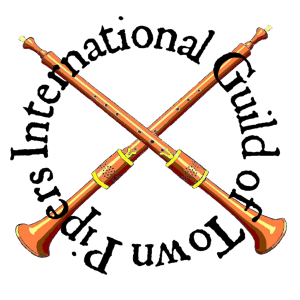Paul & Bartholomeus Hessen
The Hessen Brothers were Stadtpfeifers of Breslau in the 1550s. During which time the music they composed is likely to have been performed by their fellow Stadpfeifers.
Oddly, the Hessen brothers do not appear in New Grove 2.
The two brothers, who in ‘VieI Feiner Liebliche Stucklein’ described themselves as “bandsmen of this city”, published two big collections of dances in Breslau in 1555. Like all ensemble dance music at the time, they can be played on all sorts of instruments, though their preference for six-poart setting suggests winds to me. The problem is that the cantus part is missing, so only those pieces which survive elsewhere can be reconstructed. I seem to remember that Bernard Thomas has published at least one selection. I don’t think you’ll find anyreference to them in 24 Fiddlers.
[Peter Holman]
The 1555 publication ‘VieI Feiner Liebliche Stucklein’ contained 322 dances – Spanish, Italian, English and French dances in 4, 5, and 6 parts. The collection also contains all but one of the pieces in Bendusi’s Opera ‘Noaa de Balli’ of 1553.
Bruder Conrads Tantzmass was published by Paul & Bartholomaeus Hessen in 1555. Jerome & Elizabeth Roche’s Dictionary of Early Music (1981) carries a very brief reference:
“Hessen, Paul and Bartholomauml;us (fl. 1555) German editors, brothers, who published in 1555 an enormous collection of over 500 dances for instrumental ensemble (no complete source of which survives).”
Bernard Thomas’s Early Music Library has two issues EML 171 and EML 237. Each contain two pieces, the first for 6 instruments being passamzzi, the second for five being Hoftanze. He says there were two books of dances published in 1555 by Paul and Bartholomeus Hessen describing themselves as bandsmen of of Breslau. The first book contains 322 dances or related pairs. There is only one surviving set of part books, and the cantus is missing. The book is called Viel Feiner Liebliche Stucklein Many of the tunes are in Attaignant and Bendusi. Reconstruction was helped by a copy of several items, including the cantus part made for royal wind players in Denmark (Roy. Lib Copenhagen Ms 1873) The second Etliche gutter Teutscher und Polnischer Tentz also has the cantus part book missing, but most of the melodies are in the tenor part, making reconstruction easier. Bernard gives no further biographical information.
The London Pro Musica Early Music Library series includes:
EM L111 – Hoftanz ‘Benzenhauer’, as mentioned by Dr. James Merryweather, two versions, for 5 instruments, or four if you omit the vagant [quite permissible].
EM L171 – 2 Passamezzi Hessen Brothers 1555 for 6 instruments. BT says it works without sextus and/or quintus, so 4,5 or 6.
EM L237 – 2 Hoftanze Hessen Brothers 1955 For 5 parts, could be for 4 omitting Vagant.
Bernard’s LPM edition is a collection of marvellous music, much used by The York Waites on their Cronin shawms in the 1990s. We were pretty chuffed when we managed to memorise Benzenhauer – you try it, particularly the vagant line!
[James Merryweather]
History of German Stadtpfeifferen
I don’t know of anyone who has worked in any detail on Stadtpfeifferen (or, for that matter, on the Italian equivalent). Keith Polk discusses them fairly briefly in ‘German Instrumental Music of the Middle Ages’. He also mentions them in his Early Music article of 1989 (Early Music (August 1989), pp389-97.), now reprinted in Tim McGee’s ‘Instruments and their Music in the Middle Ages’, where he lists the German towns that subsidized ensembles (p. 400).
Maria Dobozy doesn’t seem to deal with them in her new book.
I’ll go on looking, though.
[Richard Rastall].
Credits
Thanks to the following people who generously contributed to this page:
Chris Barlow,
Dr. James Merryweather,
Nick Parkes,
Alan Radford,
Peter Holman D. Mus., M. Mus., B. Mus., Hon. RAM (indirectly),
Professor Richard Rastall MA MusB PhD FSA.
